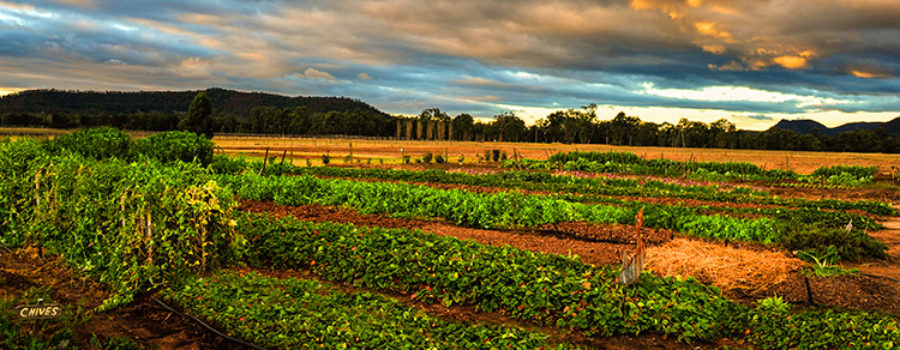Food Combination
Food Combination
If you are wondering why you are suffering constant indigestion, gas and feeling like your stomach is growling like a bear its probably due to poor food combination in your daily diet. There is an ancient holistic science of healing called “Ayurveda” which offers a logical approach for determining the right balanced diet, best food combinations and is based on eating certain food groups. Every food has its own taste, heating and cooling energy and post digestive effect. How we digest food also depends on the individual and our stomach and digestive tract. We quickly learn foods that agree or disagree with us. Its a complicated science and we are going to look at just a few foods that you should avoid eating together. The reasons why we need to avoid some food combination is due to their poor indigestion which will inhibit the enzyme system that results in toxin built up. Poor combining can produce indigestion, putrefaction and gas formation and prolonged poor diet can lead to disease.
According to Ayurvedic advice, some individuals have a strong digestive system they call “fire” which is a powerful tool to deal with “bad”food combinations. Most people are not that unlucky. Over the years our bodies can learn to build up and tolerate certain food combinations, such as eating cheese and fruit, yogurt and fruit and if you do continue to eat you can add antidotes to alleviate some of the negative food combination effects. Although sometimes over the years the affect of poor diet can take its toll and we can develop illness, disease and auto immune problems which can be hard to for the medical profession to detect.
There are spices and herbs that can be added in in our cooking help make foods compatible. Cardamom in coffee or black pepper with potatoes, ½ teaspoon of freshly grated ginger with a pinch of salt is great for the digestion. Salt also aids digestion and alkalis. During meals do not drink iced water as this slows down the digestion.
Ayurvedic cooking and diets suggest our meals should consist of ⅓ food, ⅓ liquid and leave ⅓ empty so there is no overeating.
Eat Protein with Non-Starchy Vegetable or Sea Vegetables
When you eat proteins like poultry, fish, meat and eggs (although we recommend staying away from animal products), your stomach secretes hydrochloric acid and the enzyme pepsin to break down the food in a highly acidic environment. When you eat starches like potatoes or bread, your stomach secretes the enzyme ptyalin to create an alkaline condition. Protein and starches need different enzymes and different levels of acidity to be digested. When eaten together, your body is confused and digestive problems occur.
Non-starchy vegetables are typically flowering parts of the plant. Leafy greens such as broccoli, asparagus, cauliflower, carrots, bok choy, cabbage, celery, lettuces, green beans, garlic, fennel, onions, chives, turnips, sprouts, red radish, yellow squash, zucchini, cucumber, beets, spinach, mushrooms, peppers and tomatoes are all considered non-starchy vegetables.
Non-starchy vegetables and ocean vegetables digest well in acid or alkaline environments; they can be combined with proteins, oils and butter, grains, starchy vegetables, lemons and limes and soaked and sprouted nuts and seeds.
Eat Grains and Starchy Vegetables with Non-Starchy and Sea Vegetables
There are four ancient grains which are high in protein, Vitamin B and gluten grain-like seeds: These are amaranth, quinoa, buckwheat and millet.
Starchy vegetables include butternut squash, lima beans, peas, corn, water chestnuts, artichokes and red skinned potatoes, parsnips, potatoes, pumpkin, squash, zucchini and yams. Sea vegetables is like nori, kelp and kombu.
Sea Vegetables
Sea vegetables have one of the broadest varieties of minerals available among any foods. Anyone considering a vegan or vegetarian diet should add these in their diet. They are an excellent source of iodine and Vitamin K, a good source of magnesium, calcium, riboflavin and folate. Their iron that is more bioavailable than the types found in other vegetables plus they are rich in antioxidants and in phytonutrients, compared to any other veggie.
Bad Food Combination
Don’t eat Bean with fruit, cheese, eggs, fish, milk, meat, yogurt
Don’t eat Eggs with fruit, especially melons, beans, cheese, fish, milk, meat and yogurt
Don’t eat Fruit with any other food with the exception of dates and milk. Although fruit can be combined with sour milk or yogurt.
Don’t eat Grains with fruit and tapioca
Don’t have Hot Drinks with mangos, cheese, fish, meat, starch or yogurt.
Lemon don’t eat with cucumbers, milk, tomatoes, yogurt
Don’t eat melon with anything especially dairy, eggs, fried foods, grains and starches, they are best eaten alone.
Don’t have milk with bananas, cherries, melons, sour fruits, bread containing yeast, fish, meat or yogurt.
Nightshades (which are potato, tomato etc) don’t eat with melon, cucumber, dairy products
Radishes don’t eat with bananas, raisins, milk
Tapioca don’t have with fruit (especially bananas and mango) beans and raisins
Yogurt don’t have with fruit, cheese, eggs, fish, hot drinks, meat, milk and nightshades.
Acids in orange juice or any acid fruits destroy the enzyme that is responsible for digesting starches present in cereal. Also acidic fruits or juices can curdle milk and turn it into a heavy mucus-forming substance.
According to ancient Ayurvedic literature, honey should never be cooked. If cooked, the molecules become a non-homogenized glue that adheres to mucous membranes and clogs subtle channels, producing toxins. Cooked honey is considered poison. Best to choose maple syrup instead.
Eating bananas with milk can change the intestinal flora, produce toxins and may cause sinus congestion, colds, coughs and allergies. This food combination causes confusion to our digestive system and may result in toxins, allergies and other imbalances. Similarly melons which are diuretic combined with milk which is a laxative can cause the milk to curdle and should not be eaten together. Incompatible food combination disturb the digestion.
Good Food Combination
Turmeric and Black Pepper
Turmeric is a fragrant yellowish spice abundant in Indian cuisine, is a true nutritional powerhouse. The active compound in turmeric called curcumin may protect us from a number of degenerative diseases such as osteo and rheumatoid arthritis, Alzheimer’s and Parkinson’s diseases and even cancers. It’s interesting that in India the cuisine is rich with turmeric, only one percent of elderly people develop Alzheimer’s disease? Thats amazing considering the rise in Alzheimer’s disease in Western Culture. By adding a pinch of black pepper with turmeric it can boost the bioavailabity of curcumin by 2000% .
Tomatoes and Avocados
Tomatoes are rich in lycopene, a pigment-rich antioxidant known as a carotenoid, which reduces cancer risk and cardiovascular disease. Fats make carotenoids more bioavailable, a fact that makes a strong case for adding tomatoes to your guacamole.
Adding Mushrooms with Soy
Adding Vitamin D to Soy products like tofu, soy milk has been researched to offer protection against cancer. The sun provides Vitamin D although for humans getting vitamin D is difficult in foods especially vegans. Most Vitamin D is available in egg yolks, fish, oily fish etc although all types of mushrooms provide Vitamin D. People living in dark cold climate need more vitamin D to help prevent depression. This is why Vitamin D is known as the “sunshine vitamin” so try and get 15 minutes of sunlight daily. Fortified vegan milks, yogurt have vitamin D.
Greens
Greens are one of the best food combinations. Loaded with amino acids (building blocks of protein), essential minerals and nutrients, B vitamins, magnesium, iron and fiber so great for digestion).
Fats and Oils
While fats and oils combine well most foods except fruit. Best to wait a few hours to eat fruit after dinner or lunch if oils were used.
Bring out the Iron with Lemon Juice
Plant-derived iron may be difficult for our bodies to absorb, beans contain a good amount of iron but when we combine its sources with foods rich in Vitamin C, the iron absorption increases up to six fold. Besides lemon juice, you can pair beans with other Vitamin C rich plant foods like bell peppers, kale, sweet potatoes, mango. Vitamin C helps make plant-based iron to absorb, so Lemon and Kale are a great combination. Most citrus fruits are acidic, like lemons although lemons metabolize to its alkaline form called citrate.
Beans and Rice
Generations of cooks from worldwide from Africa, Japan, India and China were wise combining beans with rice. This food combination allows the amino acid profiles of both of these foods when cooked together to form a complete protein. A very healthy alternative if you are seeking plant based protein.
Nutritional Yeast and Savory Foods
Nutritional Yeast is a must for the vitamin B12 for anyone considering a balanced plant-based vegan diet. Alternatively you can buy B12 supplements. To avoid getting deficient, it’s a good idea to sprinkle some nutritional yeast on any of the savory foods. This is healthy food combination. Try our <a href=”http://www.foodandbeveridge.com/recipe/vegan-parmesan/” target=”_blank”>Vegan Parmesan</a> recipe.
What are Nightshade vegetables?
Tomatoes, Eggplant, Potatoes, Goji Berries, Peppers (capsicums), bell peppers, chili peppers,
paprika, tamales, tomatillos, pimentos, cayenne pepper. Nightshades should not be combined with
cucumbers or lemon.
Members of the family Solanaceae, common nightshades include white (but not sweet) potatoes, eggplant, tomatoes and peppers, both the eye-watering chilies and the sweeter bell peppers. The list of edible nightshade plants also includes any spices made from peppers, like paprika, red pepper flakes and cayenne pepper which is different from black pepper which is a different plant. The majority of people can happily digest nightshades, unfortunately for some they can cause serious problems for anyone struggling with an autoimmune disease, as well as some people who simply have a digestive sensitivity to them.
Our Quick Guide for Food Combination:
Here are the food combining basics:
Protein (plant based or animal) + Non-Starchy Vegetable or Sea Vegetables = Good
Grains and Starchy Vegetables + Non-Starchy and Sea Vegetables = Good
Plant Proteins + Plant Proteins = OK
Animal Proteins + Animal Proteins = No No
Starches + Starches = OK
Fats, Oils + Proteins (animal or plant) = OK
Fats, Oil + Carbohydrates = OK
Fats + Starches = OK
Fruits are best eaten on an empty stomach do not eat directly after a meal
Fruit + Raw greens = OK (except melons)
Alkaline and Acid forming Foods
To fully understand why we should consider food combination, first realize that different types of foods digest at different rates and with different enzymes. Some foods digest better in an acidic environment, while others digest better in an alkaline environment.
Generally, alkaline forming foods include; most fruits, green beans, soy products, tofu, green vegetables, peas, beans, lentils, spices, herbs & seasonings, seeds and nuts.
Generally, acid forming foods include; cheese, meat, fish, poultry, eggs, grains, all flours, walnuts, pasta, bread, oats, peanuts and legumes.
When you eat several foods that digest at different rates, your system calls for different enzymes and need different pH levels, your digestion gets out of whack and things begin to rot and ferment in your body. This “sludge” turns into stored toxins. The body requires approximately 20% of the diet to be derived from acid-forming foods that can be properly digested to help maintain pristine health, high acid-forming diets that cannot be properly digested acidify body tissue, then drain and weaken the health.
Fats and oils are not acid or alkaline forming, except for margarine – it may be slightly alkaline. Honey, white sugar, chocolate is alkaline forming foods and although once baked as cakes they are acid forming food.
To reduce illness, diseases, toxin and poor digestion and to overall improve your health consider adopting a few of these simple food combination guidelines and make a lifestyle change. We don’t recommend eating Animal Proteins the above information is only a guide on food combinations. Why not try Plant Based Proteins for better health and save our animals?








